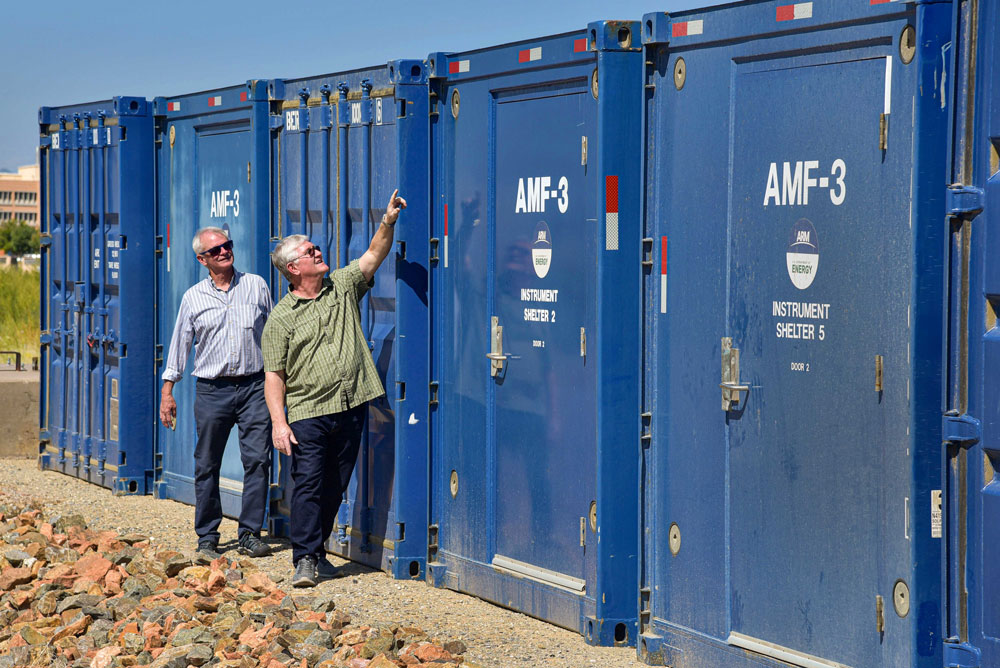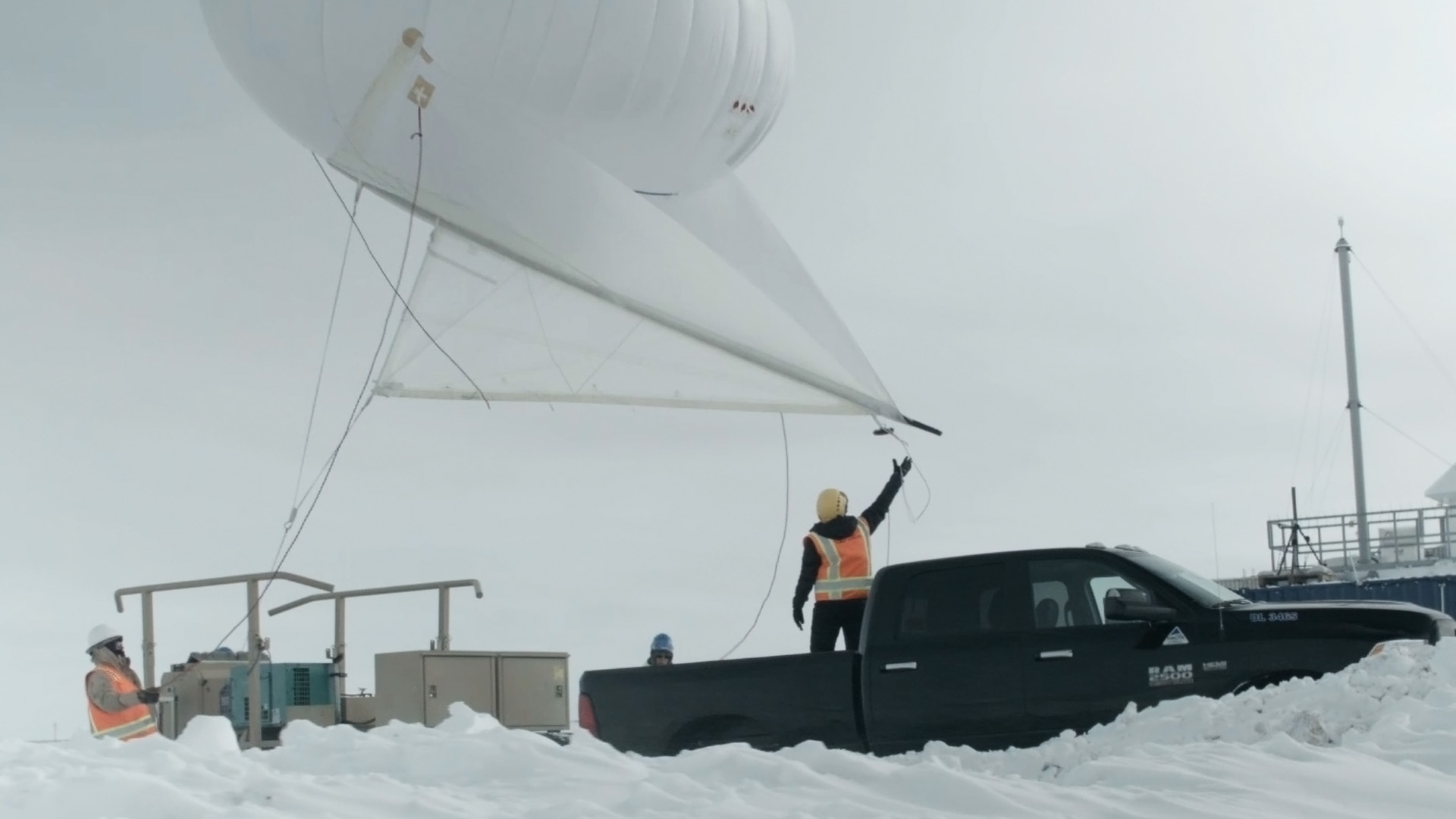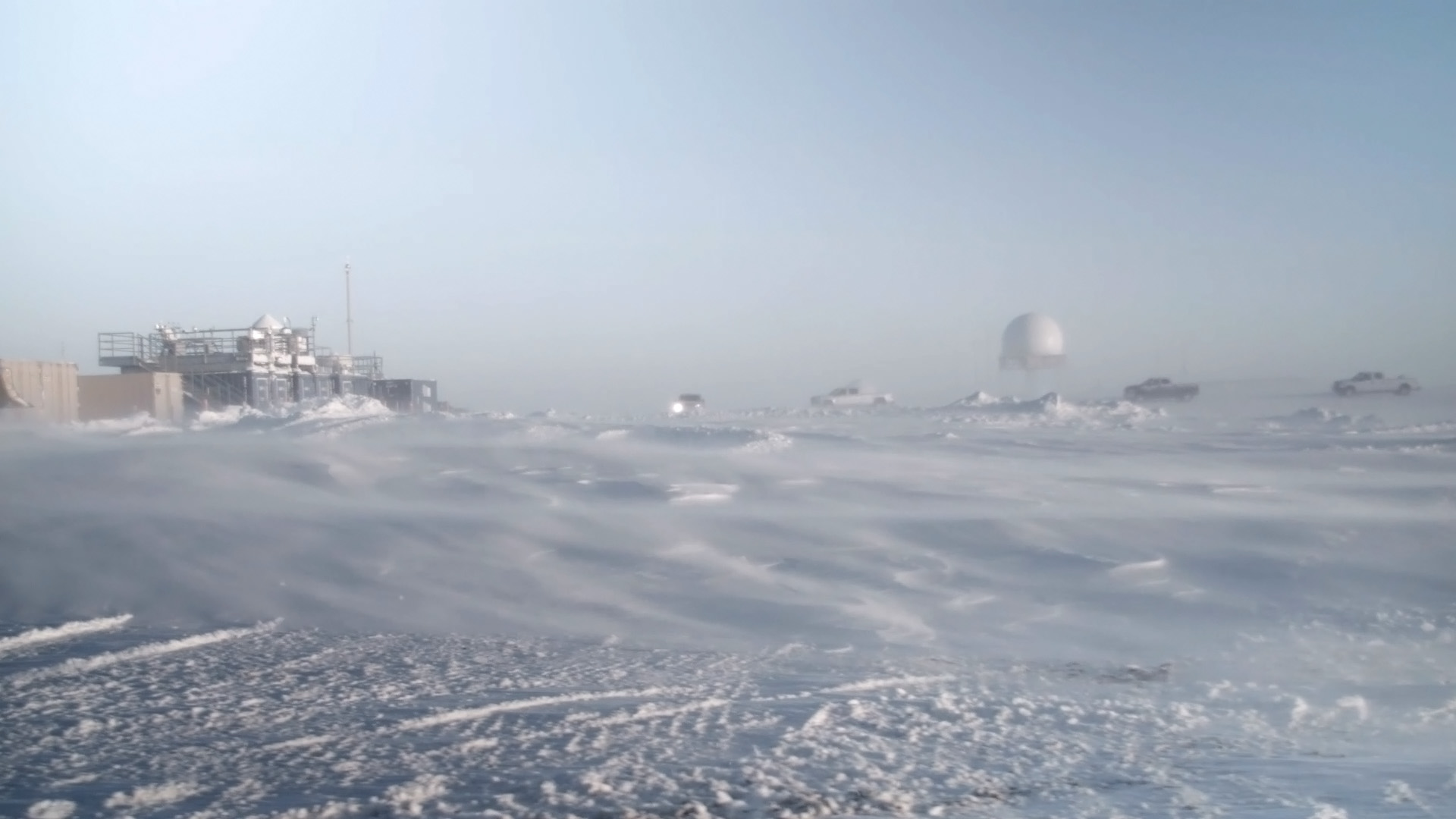Sandia-Operated Arctic Measurement Facility Moves; Research to Continue
Published: 22 November 2021
Atmospheric studies and more to continue at fixed arctic observatory

After eight great years of observations and research, a Sandia National Laboratories-operated atmospheric measurement facility moved from Oliktok Point, on the North Slope of Alaska, in summer 2021. The mobile facility will be relocating to the Southeastern United States; the exact location is still being decided.
The U.S. Department of Energy Office of Science’s Atmospheric Radiation Measurement (ARM) mobile facilities collect important data on atmospheric, aerosol, and cloud dynamics to refine climate and weather models. ARM’s third mobile facility was originally intended to stay in northern Alaska for only five years, but it collected and processed data at Oliktok Point since 2013.
Over the years at Oliktok, Sandia scientists—and researchers from across the country — have also conducted experiments on cloud dynamics, distributed acoustic sensing, uncrewed aerial systems, tethered balloons, and more. Critical arctic observations and scientific studies will continue at ARM’s fixed observatory 165 miles away at Utqiaġvik, formerly known as Barrow. The fixed ARM observatory in Utqiaġvik has been collecting data for almost 25 years.
“The DOE’s commitment to arctic atmospheric observations and researcher-driven studies in Utqiaġvik is not changing at all,” said Lori Parrott, recently retired manager of Sandia’s atmospheric and arctic sciences group. “The mobile facility at Oliktok Point offered a powerful extension of that facility, as it was on the Beaufort Sea instead of the Chukchi Sea with regional variation. We’re grateful that DOE is going to continue its mission of collecting unique atmospheric measurements to support the climate modeling community with its move of the mobile facility to the Southeastern U.S.”
Arctic Observations, Research to Continue

Arctic observations and DOE Office of Science experiments will continue at the Utqiaġvik observatory, which has been operating since the summer of 1997. Some specialized instruments, like snow measurement sensors, will move from the Oliktok Point facility to the Utqiaġvik facility, said Joe Hardesty, who leads the Sandia team managing the DOE Alaska ARM facilities. He added, “We look forward to maintaining that long record of arctic data and observations to serve the modeling community.”
One notable example of how Sandia researchers were able to use the Oliktok location to conduct other research projects is Dari Dexheimer and her tethered balloons. She has regularly flown 13-foot-tall, sensor-laden tethered balloons at Oliktok since 2015. The balloons have collected important information about the temperature and supercooled liquid water content of arctic clouds, which were then fed into climate models to fine-tune them.
“Being up at the mobile facility on Oliktok Point gave us an unparalleled opportunity to test and refine our expertise flying tethered balloons,” Parrott said. “Being able to insert instruments in a cloud from top to bottom, using our restricted airspace and stay in there to collect data over a long time, provided some unique data sets. It also gave our tethered balloon team great experience in improving our technology, strengthening the tethers, so that they could handle extreme conditions. Now we’re using that skill for other studies in Oklahoma, Texas, and Colorado.”
Another experiment that will continue at Oliktok Point is Rob Abbott’s three-year distributed acoustic sensing interrogator project. His team uses unused fiber optic cable to capture data on the seafloor of the Arctic, including sounds from ice quakes and transportation activities. “They’re doing first-time-ever measurements up there,” said Mark Ivey, Sandia senior engineer and science liaison of the ARM facilities at Utqiaġvik and Oliktok.
Special-Use Airspace Will Remain

One aspect of Oliktok Point that allowed for the testing and usage of the tethered balloons was the presence of special-use airspace, including a 700-mile-long, 40-mile-wide international warning area and a 4-mile-diameter restricted area. These enabled tethered balloon flights under protected conditions to prevent small aircraft from running into a tethered balloon hanging invisibly in a low cloud, Hardesty said. Sandia manages both the restricted airspace and the warning area for DOE.
Sandia’s arctic team is working with DOE on transferring management of Oliktok’s special-use airspace from DOE’s Office of Science to the DOE Arctic Energy Office. This will allow DOE and Sandia to continue managing that resource for researchers across the nation to be able to use, said Hardesty.
The special-use airspace has allowed for the testing of uncrewed aerial systems in extreme conditions. One collaboration with the Coast Guard allowed them to test search-and-rescue response in high latitudes, to include surveillance, detection, and communications. Communication equipment doesn’t always work the same way at high latitudes as it does in the midlatitudes, said Parrott. She added that this is due to special polar atmospheric physics that can cause interference.
“It’s still unknown, but the airspace transfer could lead to more significant research for Sandia, the DOE, and other agencies,” Hardesty said. “We have retained some facilities and equipment at Oliktok and will use these to collaborate with other agencies. Going forward, we will want to use these, and the special-use airspace, to continue and expand our research at Oliktok. There will definitely be opportunities to continue conducting arctic studies at our long-term facility in Utqiaġvik.”
For more, read the full Sandia National Laboratories news release.
Keep up with the Atmospheric Observer
Updates on ARM news, events, and opportunities delivered to your inbox
ARM User Profile
ARM welcomes users from all institutions and nations. A free ARM user account is needed to access ARM data.


















